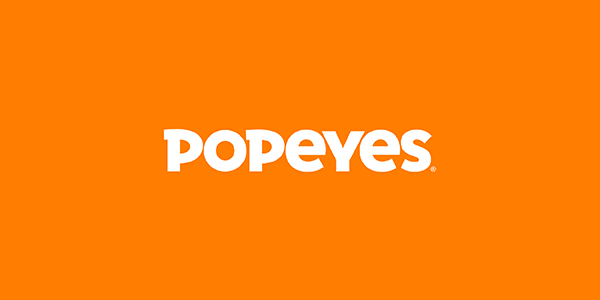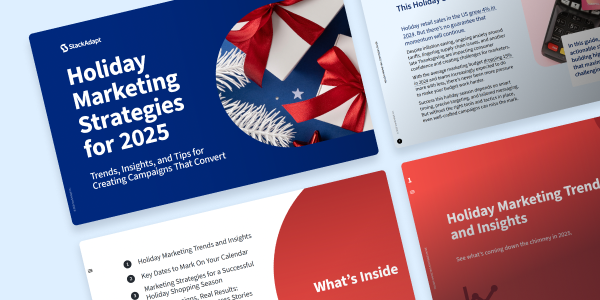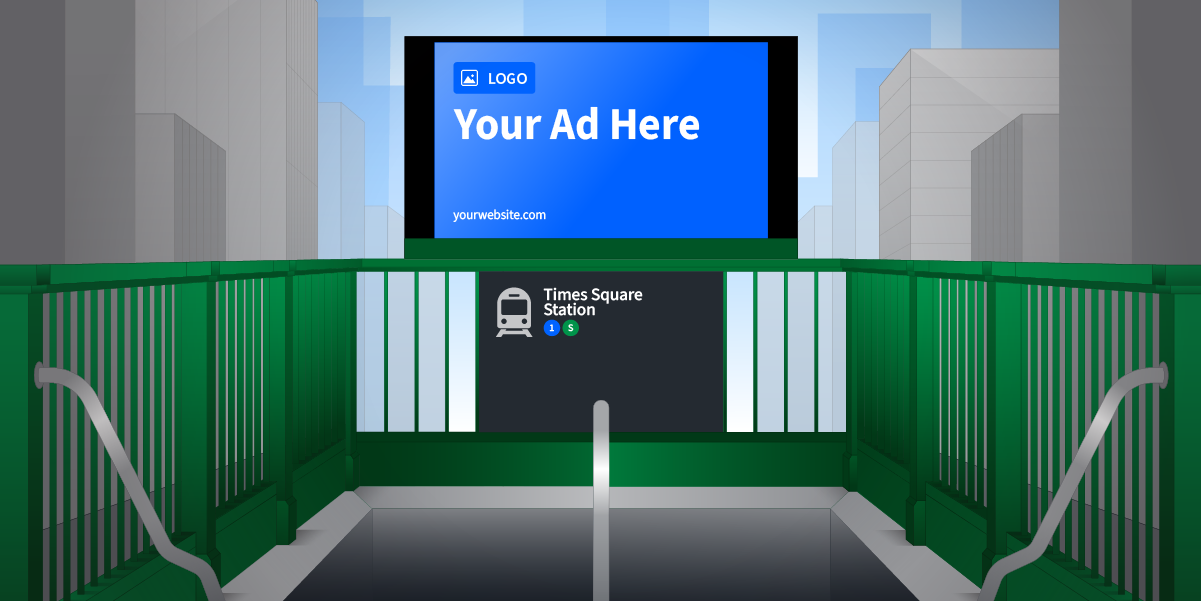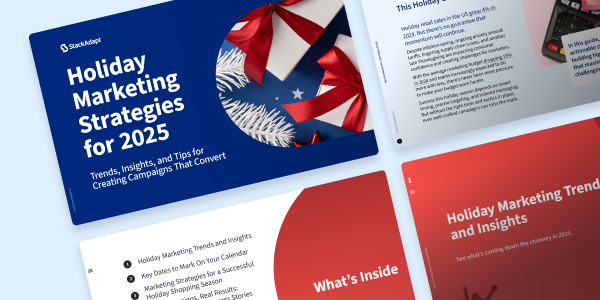How Agencies Thrive: S2
Bonus Episode 1
How to Escape the Walled Gardens

About This Episode
We unpack the shift in advertising beyond the walled gardens and discuss how agencies can use programmatic in their upcoming digital campaigns.
Shiv Gupta | Managing Partner, U of Digital
Transcript
Episode Introduction (00:00:00)
But what’s interesting is some of them, I’d say like the middle class, walled gardens are maybe not growing as fast as you’d like to see. And some of them honestly are not growing as fast as digital in general. And I think that’s an interesting area to kind of hone in on, right? Because I think what we’re seeing is marketers are saying, Listen, if you’re Amazon, or if you’re Google or Facebook, you know, you’re somewhat of a must buy right now, because consumers spend so much time there. There’s so much scale in those platforms. But if you’re a walled garden, kind of like hovering around in that middle tier, and you’ve made life hard for the marketers, right, by putting up those walls and making it difficult to transact in those environments, well, are we better off going elsewhere?
How Agencies Thrive Introduction (00:00:43)
But then you think about the social landscape. The research data is hugely significant when we combine all of these different touchpoints. So that long-term loyalty and then diving into the clicks to leads to sales have gotten to a point where they can drive better results in audience targeting, and really is what’s going to set you apart. You’re tuning in to the How Agencies Thrive podcast.
Matt (00:01:08)
Hi everyone, my name is Matt, I’m the Education and Development Manager at StackAdapt. And welcome to this bonus episode of The How Agencies Thrive podcast. Before we head into the third season of our show. In this short series of episodes, we’ll be covering high-level industry tips, tricks and insights to help you succeed in the programmatic industry. Today, we’ll be covering the topic of programmatic versus walled gardens. And we’re joined by none other than Shiv Gupta from U of Digital. Before we get started with our questions here, Shiv, I’d love to hear a quick overview of yourself, you’ve digital and your experience in the industry.
Shiv (00:01:43)
Thanks for having me, Matt, really excited to be here today to talk to you about this super exciting subject. A little bit about me. So as you mentioned, my name is Shiv. Been in the ad tech industry. My whole career, I was at AOL for about 10 years, for those of you out there that know what AOL is. And I was mostly on the programmatic ad platform side of their business. And then I was at a company called Criteo, for a couple of years, mostly in sales. And then four years ago, I started this company called U of Digital, and our mission, our vision, our goal is to help bring some clarity to this crazy space, through structured education, right, like it’s a very complicated space, it’s changing fast. There’s always jargon and acronyms, and all sorts of just information constantly to sort through. And it’s our job to help distill that information, curate the information into bite-sized kind of educational chunks and touch points, so that individuals and companies in the space can learn. And, you know, we’re super excited to be partnering with tons of great companies in the space like Google and Amazon and tick tock and also StackAdapt. So really excited again, to be here on the podcast today and talk to you about, you know, agencies and how they should be thinking about programmatic versus the walled gardens and all of the things that kind of get wrapped up into that.
Matt (00:02:58)
Awesome. Yeah, thanks so much. We’re glad to have you on the episode. So let’s get started with a couple of rapid-fire questions, and we’re really interested to hear your thoughts on these. So the first question that we had for you is, you know, in the last two years, what kind of shift Have you noticed in terms of advertising within walled gardens versus advertising on the open internet?
Shiv (00:03:20)
Yeah, I mean, it’s a really interesting time, Matt, right? I think that, you know, walled gardens, you know, let’s call it how it is, are more important than ever, for marketers, because they capture so much user time and attention. And they create really interesting sticky experiences for consumers. And so, you know, marketers, I think, you know, they kind of have to be there, it’s kind of like a, it’s almost like a necessary evil in a way. Now, on the other side, it’s hard to work with these walled gardens, right. It’s all very well documented that the walled gardens, you know, let data come in, don’t let data go out. They’re very closed ecosystem. So it’s hard to bring in, you know, external parties to do things like measure or, you know, monitor, you know, your campaigns within those environments. And so there’s a little bit of a love-hate there. What I think is interesting, if we think about kind of the net result of all of that is, you know, again, you can’t deny the numbers, the walled gardens are capturing more and more of share across the ecosystem, particularly of you know, particularly the big walled gardens, right? So the Googles, the Amazons, the Facebook’s of the world. But what’s interesting is, some of them, I’d say, like middle class, walled gardens are maybe not growing as fast as you’d like to see. And some of them honestly are not growing as fast as digital in general. And I think that’s the interesting area to kind of hone in on right, because I think what we’re seeing is marketers are saying, Listen, if you’re Amazon, or if you’re Google or Facebook, you know, you’re somewhat of a must buy right now, because consumers spend so much time there. There’s so much scale in those platforms. But if your walled garden kind of like hovering around in that middle tier, and you’ve made life hard for the marketers, right by putting up those walls and making it difficult transact in those environments Well, are we better off going elsewhere? Right? And that’s where I think we’re starting to see a bit of a shift towards open programmatic. Because I think programmatic gives marketers a ton of opportunity to capture user attention, but do so in a more diverse way. Right? Do so more with diversified sets of data, do so more in different types of mediums and through different channels, do so with different types of canvases of creative. And I think that’s fascinating, right, and I expect to see kind of more of that evolution in the coming years.
Matt (00:05:31)
It’s interesting that you mentioned that because it’s, you know, perfectly transitions into the next question, because leading up to the episode, we did some, some research, and we said, okay, you know, what kind of data is there on something like a click-through rate, you know, what are the click through rates, like on social versus programmatic, and there’s some stats out there that are saying that click through rates are dropping. And, you know, you said this perfectly that walled gardens have almost made it more challenging for advertisers, you think about something like political advertising on Facebook, I mean, that’s just, you know, not something that’s really possible. So what it’s done is it’s created this great opportunity for programmatic to shine through and I’d like to know from, from your perspective, you know, what ways has programmatic kind of become this unsung hero for digital advertisers?
Shiv (00:06:23)
Yeah, that’s a great question. I think that, you know, the CTR point is really interesting. You know, I think it definitely has to do with some of the sensitivities, right, that the walled gardens have created around advertising, like you said, I also think a lot of has a lot of it has to do with supply and demand, in the sense that, you know, there was just like, this gold rush into some of the walled gardens, most notably Facebook, and if you talk to marketers, you know, let’s say, over the last six months to a year, prices in those environments have gotten pretty onerous, right. And so, you know, if you’re looking at click-through rate in a vacuum, and click the rates going down, that’s a problem, right? But also, if you’re looking at things like cost per click, and you’re factoring price into that equation, I would imagine the math is even worse, right? It makes those platforms look even worse, because CPMs, and prices have gone up in those platforms. Right. So I think at Google, you know, that’s been an issue with Google search for a long time. And so So yeah, I think you’re right. I think programmatic can kind of be an unsung hero in some of these situations where marketers can say, Listen, is there an opportunity for me in open programmatic to find pockets of users and inventory that are maybe under-indexed a little bit maybe not as saturated as let’s say, you know, a Facebook or an Instagram or something like that, where I can have success, right, I can get scale, I can get performance, and maybe do so in a slightly different way, right through a slightly different medium, maybe in a different, slightly different part of the consumer kind of journey or funnel, but I can still kind of achieve the business outcomes that I’m looking to achieve, right. And I think the benefits of programmatic versus the walled gardens are obvious, right? It’s, first of all, it’s that data and data outright, you can tell a more holistic, seamless story with other media platforms, kind of in the mix alongside programmatic because they are more open, more open ecosystems in general, there’s more flexibility, right to reallocate and move things around change, you know, what part of the funnel you’re focusing on, as opposed to kind of being boxed in by a walled garden. And at the end of the day, as I mentioned, I think all of it kind of comes down to these, this notion of like, the programmatic ecosystem potentially offers greater scale, and more pricing efficiency, frankly, than some of these oversaturated ecosystems and walled gardens.
Matt (00:08:36)
You know, talking about that shift. What kind of recommendations do you have for, you know, say, an agency or a brand? Or anybody who’s doing any kind of advertising? You know, what kind of advice do you have for them, when it comes to making that shift from perhaps being a business that is traditionally spending on social to now shifting over to programmatic? You know, what are those first steps? What are those best steps that they can make to to make the most out of the open Internet?
Shiv (00:09:05)
And the first thing I’d say, and I highlighted this briefly in my last response, is understanding the nuances and the differences in the mediums, right, like, I think we have a tendency sometimes to kind of apply things very broadly, whether that’s KPIs, whether that strategy, whatever it might be, we try to, like we try to apply those things broadly across all of our channels, all of our partners, etc. Right? I think it’s really important as you go into, let’s say, you know, programmatic buying and open market buying to understand, hey, this is fundamentally different than my Facebook buy, or my tick tock buy in these very specific ways. Right. And I think that’s the first kind of step that I think a marketer needs to kind of wrap their head around and adjust their strategy accordingly, adjust their KPIs accordingly, so that they’re setting themselves up for success, right. You don’t want to necessarily use a medium in a way where you’re setting it up for failure. Right. So I’d say that that’s the the most important thing is understand that open programmatic advertising is just not the same thing as a, you know, Facebook-sponsored ad in feet, right? And let that then kind of trickle down into everything that you do. And then beyond that, I think it’s really important to kind of take a diversified approach, right. I think, you know, putting all your eggs maybe in one basket, when it comes to programmatic is not necessarily the right way to go. You know, we see that marketers use multiple platforms, multiple programmatic solutions sometimes. And you know, in the past, I think that’s been a little a little bit faux Paul, right of like, Oh, why are you using multiple platforms to kind of do the same exact thing? Well, the key is, it’s not all the same exact stuff, right? It’s not all the same data. It’s not all the same inventory. And so I think taking a diversified approach is, is interesting and important. And then last, but not least, I think, again, we have a tendency in our industry, sometimes to like chase after the shiny object, right? When it comes to, you know, whether it’s walled gardens or programmatic, like, we tend to just gravitate towards what’s hot, and what people are talking about. There’s a lot of good stuff out there, honestly. And there’s a lot of tech out there that, you know, marketers, I think, should be thinking about and vetting and asking tough questions to their partners to understand how these things are differentiated. And really, I think marketers should be more comfortable with saying, listen, here are my needs, how can you solve them, as opposed to kind of saying, Okay, well, I’ve heard of this programmatic solution, this has to be the right answer. I’m just gonna go in that direction. I think marketers should be a little bit more open and kind of let their guard down potentially, to hear what’s out there.
Matt (00:11:35)
Closing out. Let me ask you this. Think into the future 5, 10 years from now? What’s happening in the industry, especially with walled gardens? Where do they stand, you know, what’s the benefit that they’re still providing? You know, are they going to be phased out? Are they going to have adapted over time? What do you think is going to happen?
Shiv (00:11:55)
That’s a great question. I have to I think I have two thoughts for you there. My first thought is, I think it’s gonna be really interesting to see what happens with subscriptions. And what I mean by that is, you know, everything right now everyone’s talking about Elon Musk buying Twitter while Elon is anti-advertising and pro subscriptions. And hey, listen, Elon may not buy Twitter, eventually, he may back out of that deal. But even if he does, I do think that Twitter is going to get more aggressive around subscriptions. And I think that’s going to be an interesting moment for the walled gardens. That may kind of set the stage for a lot of copycatting, right, like a lot of walled garden saying, Okay, well, ads have been tough. They’re not necessarily engendering the right type of content on our platforms. And so let’s go more towards subscriptions. And hey, by the way, we’ve seen that all play out in streaming, right, like, we know that you have the Netflix’s and the Hulu’s of the world that are kind of this hybrid ad-supported and subscription model. So one of my predictions with social media and walled gardens in general is, I think, in the future, it’s going to be a lot more of that hybrid ad-supported and subscription type of model. And I do think Twitter’s going to be an interesting case study to set the stage for that. My second prediction is, I think, you know, right now, especially from an advertising perspective, we’re seeing this mass proliferation right now of walled gardens, right, every company wants to be a walled garden, whether it’s, you know, the obvious ones, like Snapchat, and Twitter and Pinterest, and tick tock, et cetera. But then also the less obvious ones, right, whether that be Samsung, or Walmart, or Best Buy, like, like a lot of the retailers. So everybody wants to be a walled garden right now. And ultimately, we see this play out in a lot of industries, right, where you have initially like a proliferation of of solutions, especially when there’s like a hot new market. And that’s frankly, like, that’s what the addons industry is, right? It’s still early, it’s still hot. And so you’re seeing this proliferation of copycats of the Facebook’s and the Googles of the world, but long term, we know that marketers are not necessarily going to want to have direct relationships and buy directly from all these walled gardens. It’s not efficient, it’s not scalable. And so, over time, the market will dictate a consolidation, frankly, right. And what that means is there will be winners, there will be walled garden winners, and there will be walled garden losers. And I think, you know, ultimately, the walled garden losers, which honestly will probably be most of them, will end up selling their inventory and their data programmatically through programmatic marketplaces. So I do think long term, you know, you’ll have some winners, the big guys will probably win, you’ll have some losers. And I think the losers ultimately just become part of the programmatic ecosystem, which is kind of another feather in the cap, right of programmatic platforms like StackAdapt, or, you know, like, like other major DSPS and ad exchanges that are out there. So I think it’s I think it’s pretty exciting to think about it in that way. When you’re thinking about when you’re thinking about programmatic versus walled gardens and kind of where things are headed.
Matt (00:14:55)
And you know, this is this is the media industry. Unpredictable things happen and predictable things happen. Listen Shiv, thank you so much for joining us on this episode. And to our listeners. We hope you took as much away as we did from this bonus episode. So stay tuned for more episodes and we will see you next time. Thanks so much.
Episode Outro (00:15:18)
Thank you very much for tuning into this episode today. If you like what you heard, it would mean the world to us. If you do these three things, subscribe to the show and leave us a review. If you’re listening to this and know someone who would find this episode valuable. Please share it with them. And finally, please share it on LinkedIn. If you have questions or feedback, we’d love to learn how agencies or brands work with StackAdapt, find us at www.stackadapt.com. Thanks for listening, and I’ll see you next time.





